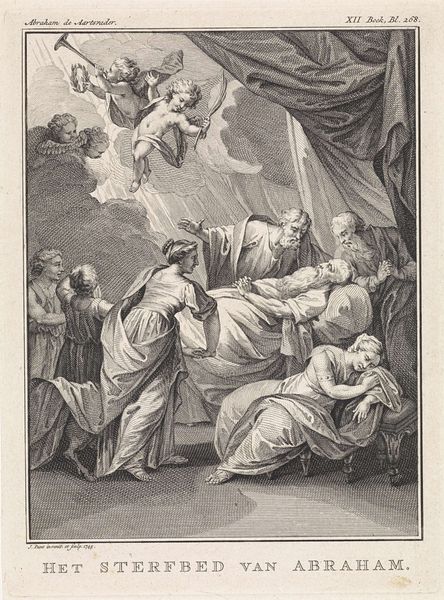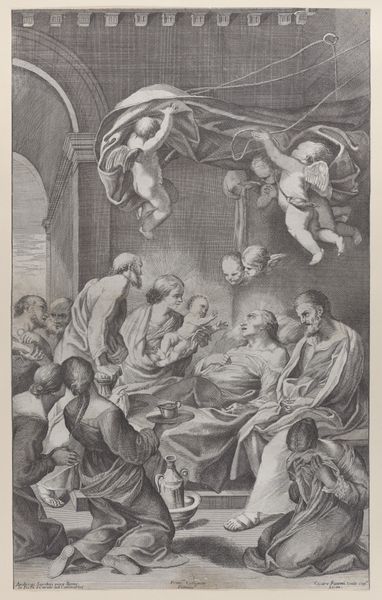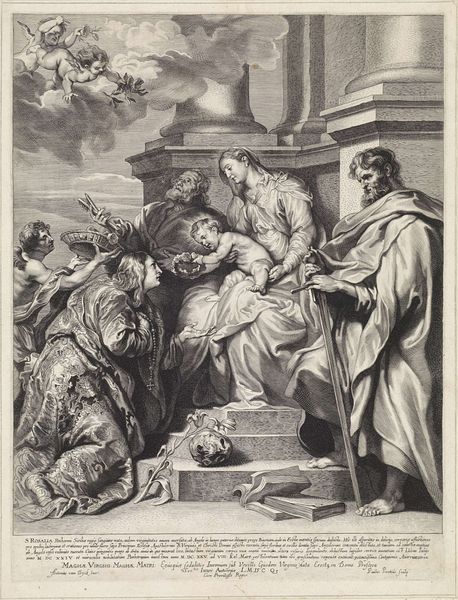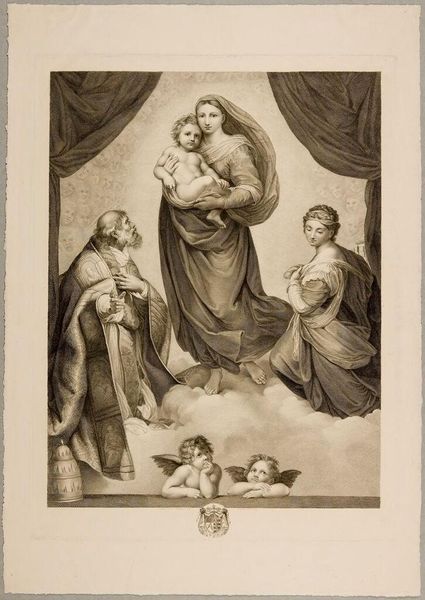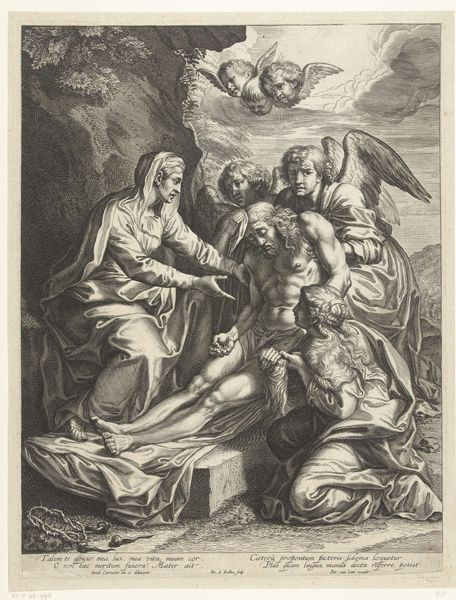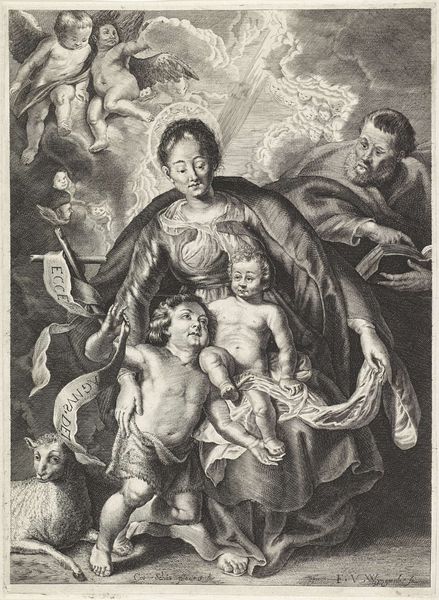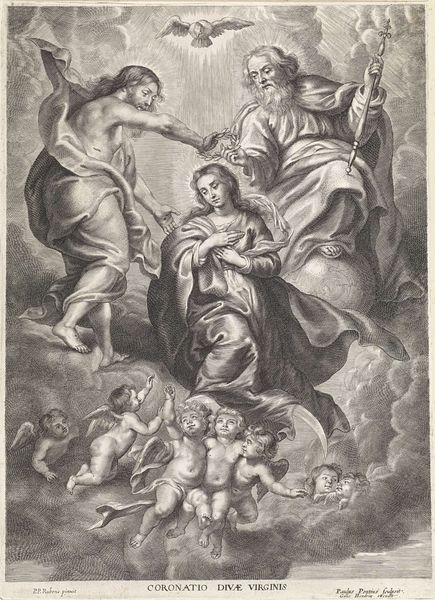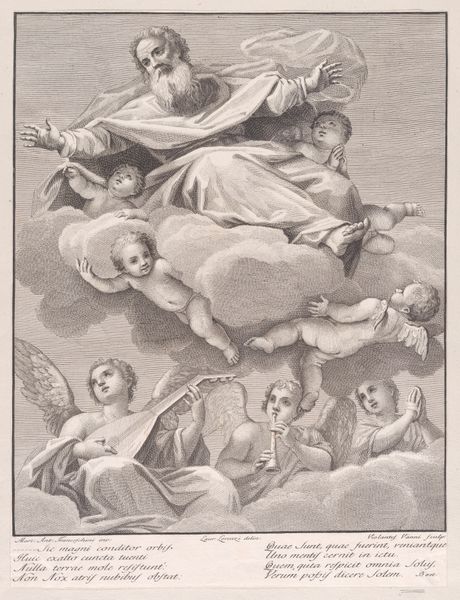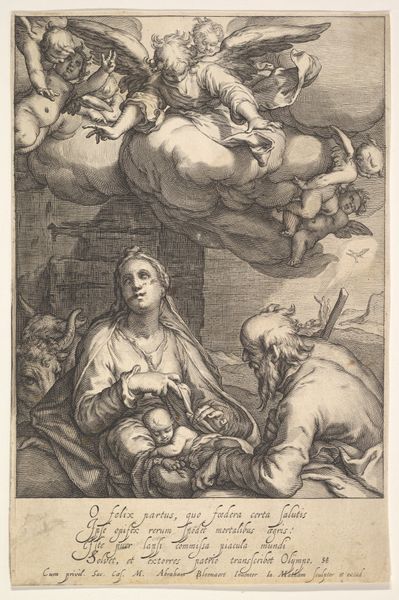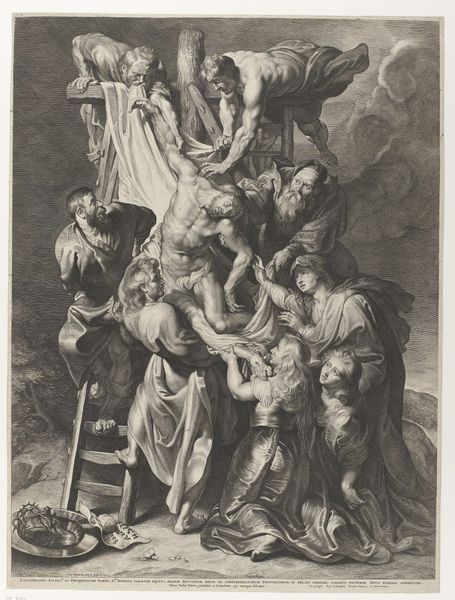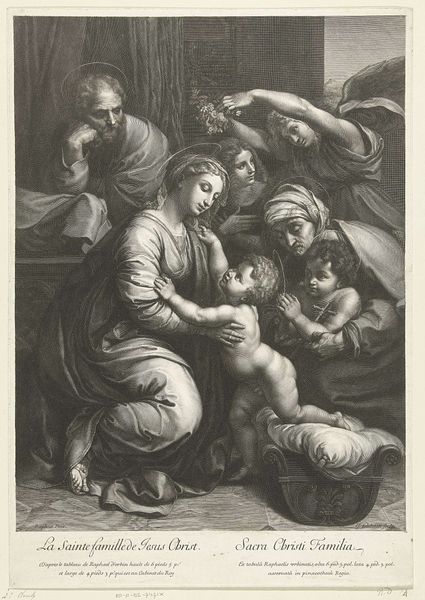
engraving
#
baroque
#
figuration
#
history-painting
#
engraving
Dimensions: height 648 mm, width 376 mm
Copyright: Rijks Museum: Open Domain
Curator: Let’s consider this engraving, “Bewening van Christus,” or “Lamentation of Christ,” made in 1634 by Paulus Pontius, found here in the Rijksmuseum. Editor: Woah, it’s heavy. I mean, it looks incredibly weighty. All those figures, the sorrow just piled on, and all rendered in this intricate detail, it feels like a physical burden just looking at it. Curator: It's true; the density is striking, but that weight is very deliberate. Pontius, trained in the workshop of Rubens, deploys Baroque techniques to emphasize emotional drama and religious intensity. The composition focuses on the Virgin Mary cradling Christ, set amidst grieving figures and symbols of the Passion, drawing the viewer into a complex moment of sorrow and theological reflection. Editor: Definitely feels performative, like staged grief, which somehow, ironically, feels deeply authentic to the time period. The children wrestling with what appears to be Christ's crown of thorns... I'm getting real "theatre of the absurd" vibes, honestly. The way light struggles to pierce through the gloom makes it more compelling. Curator: Well said. The high drama and chiaroscuro were part of the broader Counter-Reformation artistic strategies—an attempt to appeal to emotions and bring religious stories to life in vivid, relatable ways, even bordering on the excessive. Think about this work, its relation to trauma, gender, and social power. How does portraying this scene reinforce the idealized, yet grief-stricken image of motherhood, while simultaneously highlighting the sacrificial, gendered dimensions of religious belief? Editor: See, to me, the image has the vibe of, like, Baroque-era crisis of faith—or maybe not a crisis exactly, but that constant push and pull between ecstasy and agony that characterized so much religious expression at the time. It isn't as simple as devotion to God but how that relation sits in one's soul as trauma. Curator: Precisely, Pontius is able to weave into the religious imagery larger questions of social importance. The engraving becomes more than a record. Editor: For sure, it reflects the tensions, desires, and performances inherent in faith itself. It’s heavy, like I said, and a little… delicious in its melodrama. A sign of the times?
Comments
No comments
Be the first to comment and join the conversation on the ultimate creative platform.

